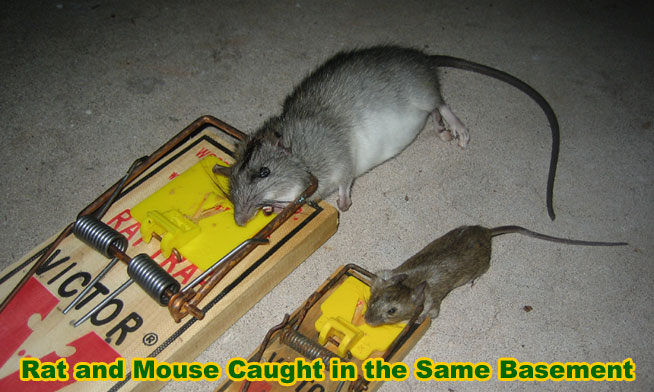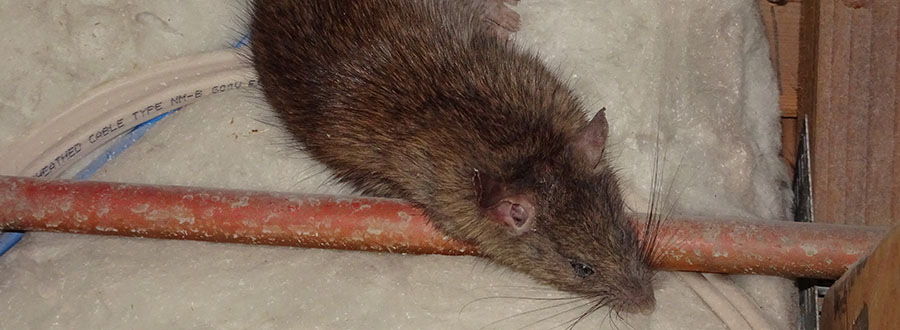Best Steps to Do ASAP to Get Rid of Basement Rats
Yes, rats can get into any part of a home or building, including the basement (cellar). Black Roof rats, (rattus rattus) are more likely to live in the attic, whereas the Brown Norway Rats, which tend to live more on and underground, such as in the sewers, are more likely to live in the basement. Mice will also live in basements.
CAN YOU TRAP RATS IN THE BASEMENT?
Sure! Just set traps throughout the basement. Face the snap traps against the basement walls, and wherever you see signs of rodent activity, from droppings to the brown staining rats leave behind when they travel a trail over and over. Make sure that there are no open plumbing pipes. You don't want rat coming in through the toilet.
HOW TO SOLVE THE PROBLEM PERMANENTLY
If you want to get rid of rats in the basement, you need to follow
a series of steps:
STEP 1: Find out how rats are getting inside the building. Those
rats are entering your home and basement somehow. You will NEVER solve
your rat problem unless you find ALL the entry points. You must
inspect the whole structure, from the ground up, and the plumbing system. Check vents, crawlspace holes,
plumbing stacks, AC chases, EVERYTHING. This page will
help explain the inspection process in more detail:
Rat Inspection.
STEP 2: Seal up all the entry points. That's right, seal them up
first, even if there are many rats currently inside the building. If
you leave the entry holes open, and then begin trapping or excluding
the rats, guess what? Open holes mean more and more rats will keep
coming in, and the job will never end. Read more about repairs on this
page: Rat Repairs.
STEP 3: Trap and remove the rats.
First, you can use the standard lethal snap traps. Second, you can use
live cage traps. Third, you can install a one-way funnel door exit on
the primary rat entry/exit hole, if you have identified it. I have
used all of these methods. I must say that I absolutely do use the
lethal snap traps in the cellar. I have found this method is to be
the most effective, and it's more humane than a slow, painful death by
poisoning. Set the traps on the rodent runways, not haphazardly. Trap
placement is absolutely key. Read more about the art of rat trapping
here: How To Trap
Rats.
The best way to catch rats in the basement
If rats aren't in the attic they're usually in the basement. Rats in the attic are normally Roof, or Black Rats (rattus rattus), and rats in the basement are normally Norway, or Brown Rats (rattus norvegicus). Basements and attics
hold the same appeal: quiet, dark places where people visit infrequently. Rats like basements because there is often a large supply of stored items that provide an entertaining maze of pathways and potential nesting sites. Home
foundations are often full of cracks and openings, especially just below ground level where water damage and frost have broken down the concrete. Because people assume that a crack in the foundation is irreparable and causing no harm,
repair needs are often ignored. Before you can focus on getting rid of the rats in the basement, you need to patch the holes in the foundation—or anywhere in the exterior of the home where an opening has been noticed. When you go to
trap the rats in the basement, do not clean everything out and then set the traps. Rats will not go to traps if they feel insecure. Leave the basement as is and set the traps in areas where you have noticed feces or urine marks. Rats
will use their droppings to mark areas of safe passage. Placing traps in these locations will ensure the best chances of success.
Read here about rats in the sewer.
THE SAME APPLIES TO MICE
Although I wrote this site with rats in mind, such as the Roof Rat and
Norway Rat, the same principles apply to other rodents, such as the
house mouse. Mice behave very similarly to rats, they're just smaller.
Email me if you have any questions about how to get rid of a mouse in
the basement, mice in the cellar, and rodent problems in the
basement.









